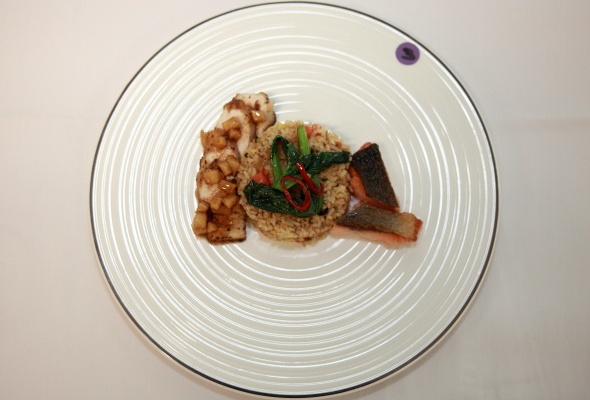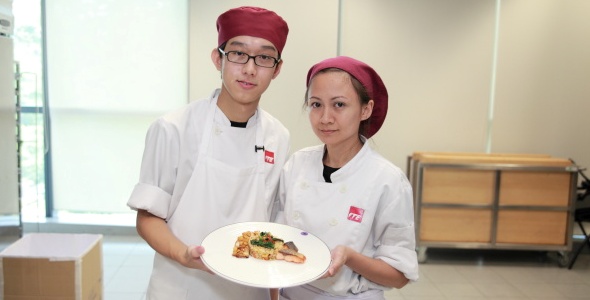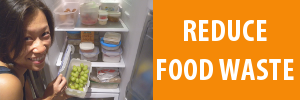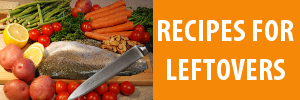Butter Rice with Chicken Breast, Fish Fillet, Vegetables and Cinnamon Apple Cubes
December 14, 2016 by Save Food Cut Waste
Filed under Carrots, Chicken, Fruits, Recipes, Rice, Tomatoes, Vegetables
If you have unconsumed cooked rice, vegetables and chicken meat, or excess carrots, tomatoes and apples at home, use this recipe to turn them into a delicious dish!
This recipe is developed by Wong Kah Jun and Sulastri, Pastry and Baking students from ITE College West.
Number of Servings: 1
Preparation and Cooking Time: 1-1.5 hours
Ingredients
- Excess Carrots – 20 g
- Spring Onion – 10 g
- Butter – 125 g
- Coriander Leaves – 2 g
- Unconsumed Chicken Breast Meat – 100 g
- Excess Tomato – 20 g
- Salmon – 100 g
- Soya Sauce – 15 ml
- Salt – 1 g
- Pepper – 1 g
- Unconsumed Vegetable – 20 g
- Sugar – 5 g
- Oil – 45 ml
- Chilli – 10 g
- Excess Apple – 1 no.
- Yellow Onion – 1 no.
- Cinnamon Powder – 2 g
- Unconsumed Cooked White Rice – 400 g
Method
- Stir fry the cubed carrots and chopped onions till lightly brown and remove from pan.
- Melt a tbsp butter in a pan, add in cooked white rice and fried till golden in colour seasoned with a little salt and pepper.
- Add in the cooked carrots, chill, onions and spring onions into the cooked rice and fry till fragrant.
- Peel and cube the apple.
- In a pan melt butter and cook the apple cubes till soft before adding cinnamon sugar. Cook till sugar caramelise. Remove and let it cool.
- Season chicken breast meat with a little salt and pepper. In a pan lightly sear the chicken, cook till golden in colour.
- Add some oil into pan and add in the salmon, skin side down and cook till the skin is crispy.
- Boil some water seasoned with salt and blanch the vegetables and soak it ice water to prevent further cooking.
- Lastly plate all the ingredients.
Food Safety
Follow these food safety tips from AVA on storing cooked food to reduce the risk of food poisoning from contaminated cooked food:
- All cooked food should be refrigerated or frozen within 2 hours after cooking.
- Store cooked food in a clean, shallow container.
- Use shallow containers and leave sufficient air space around the food to promote rapid and even cooling. Cooked food stored in large, deep containers remain warm for a longer time. Dangerous bacteria may grow in this warm spot which can lead to food poisoning if consumed.
- When freezing cooked food, make sure they are wrapped tightly.
- Keep your refrigerator uncluttered so that air can circulate and cool food properly.
- Do not refreeze frozen food that have been thawed.
- As a general rule, do not keep cooked food for more than 4 days.
Source: AVA
Disclaimer
We assume no responsibility or liability for any damages or losses you may experience as a result of following the recipes, instruction or advice on this website.
Copyright
Zero Waste SG and ITE have the rights to use the recipes and photos for our websites, publications, activities, and for other purposes.










